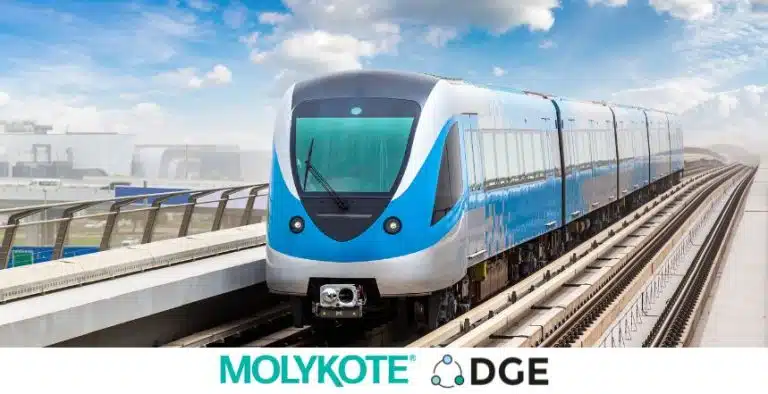The Specialty Chemicals Industry faces difficult times ahead. The raw material supply is impacted by increased political instability, causing prices to fluctuate while environmental concerns are growing over the world, and chemical markets are being subjected to more stringent restrictions.
Digitalization arises as a driver of the future success of the chemical companies by introducing new systems and structures in their operations.
What impact will digitalization have on the chemical industry, and where will it be most noticeable?
The chemical sector will be affected in three ways by digital technology:
- The first is functional excellence, which is defined as the use of digitally enabled ways to improve a company’s business operations.
- Second, digital can influence end-market demand patterns, which has ramifications for the chemical industry’s value chains.
- The third scenario is one in which digital advancements result in changes in the business structures through which chemical businesses collect and generate value for their clients.
Which skills does your business require to succeed in the digitization process?
Structure, strategy and team mindset are the three key dimensions that will guarantee a successful digital transformation.
Create the ideal organizational structure.
Adding fresh digital skills to an existing, generally engineering-centric organization is unlikely to be a winning formula. Digital isn’t only about applications, algorithms, and tools. To allow new digital ways to blossom, the organization and governance must be adjusted.
Create the route map using an agile mindset and strategy.
Conventional investment and strategy usually relied on large bets that took years to pay off. Today’s leaders want to test or reject concepts in months, not years, resulting in fundamentally different risk profiles for the journey than previously thought.
Create a digital mindset.
While structure and governance offer the framework for digital growth, it also requires the correct culture and atmosphere. As a result, it’s critical to plan ahead of time how to enable a digital culture to take root, rather than waiting until organ rejection has set in. What kind of environment, encompassing principles, management style, and workplace design, is needed for the digital company to thrive?
So, where does digital economic potential in chemicals come from?
Decision-making based on data
Even in the age of big data, senior executives still make far too many decisions based on gut instinct.
Marketing departments, from upper executives to line employees, can substantially improve their judgment by mining data and uncovering information that can help organizations grow and expand their profits using powerful analytic engines.
Improved customer access
Businesses that operate across many channels consistently beat their single-channel counterparts.
Despite this, few chemical businesses have adopted online sales methods; most continue to service clients primarily through direct sales personnel and distribution partners.
Customers in the chemical or gas industries start to evaluate personal interaction as vital for various purposes, such as locating suppliers or exploring new goods, according to new findings on B2B customer decision journeys.
Exceptional client service
With their continual attempts to make interactions more convenient and enjoyable, consumer corporations are paving the world in the customer-experience area. The same process can produce chemical companies a substantial competitive advantage, especially when compared to their low-cost competitors.
Companies can please clients by easing and streamlining their consumer experience at every point, from providing immediate quotations via adaptive deal scoring during supplier selection to remote monitoring equipment and making precautionary advice during service.
Chemical firms may use digital technology to go beyond improving customer touchpoints and rethink overall customer experiences to reduce attrition, improve acceptance rates, and lower the cost of serving.
Diving deep into a B2B digitalized customer service
The expanding impact of customer-experience initiatives and the daring movements of customer-centric executives constitute a serious challenge for many B2B organizations across various industries. Being in the proper markets, delivering high-quality products and services, or being the lowest-cost manufacturer have always been the keys to success in the B2B arena. Several companies have bet on functional excellence since these advantages have been threatened by increased global competition. However, while these advantages are significant, they are swiftly eroding as rivals take advantage of growing labor market mobility and enhanced knowledge availability.
Customers in the business-to-business sector are already seeking greater service. Lack of speed in contact with suppliers surfaced as the top “pain factor” in a recent McKinsey poll of 1,000 B2B stakeholders, named twice as much as price. Digital solutions are also looming large in the minds of CEOs as a way to make mundane processes more efficient. Instead of speaking with a sales professional, 86% of them prefer to use self-service options for restocking.
However, most B2B organizations’ reality seems far from this ideal. Many businesses take days to issue an estimate, demand customers to fill out lengthy order forms (typically on paper), and regularly keep clients away from the status of their orders.
The problem is that, while customer journeys are important across both B2B and B2C, their frequency and importance are different in B2B. The following are some of the most significant differences:
- In B2B, relationships are frequently deeper. Co-developing a product with a supplier is widespread in many B2B businesses and a vital source of innovation, but it is uncommon in B2C collaborations. Furthermore, many B2B engagements are long-term and involve recurrent sales.
- More people are involved in larger, more sophisticated B2B trips. In a B2C scenario, picking a supplier is essentially a matter of agreeing or not to a standardized offering. Multiple engineers must examine and later certify the product in B2B, often changing a design or method, whereas logistics and ’s management must often wait until pricing, quantities, delivery periods, and other points are established before coordinating regular deliveries. Just to complete the deal, 15 to 20 persons may be required to make decisions.
- B2B customization is more common than B2C customization. Customers demand that B2B vendors adjust not just to their goods but also their processes. As a result, knowing this diversity is necessary for rethinking the client experience: How much of it is due to value-creating flexibility to satisfy the needs of major customers, and how much is since flexibility has become the standard, without anyone in charge of balancing efficiency and flexibility trade-offs?
- In B2B transactions, the stakes are frequently bigger. For large B2B enterprises, client connections are probably worth millions of euros. These merchants will go to considerable efforts to keep a satisfied (and profitable) customer; losing even one customer could mean ruin for the entire business. In B2C, it’s more about the numbers than the value of a single consumer. Companies have to consider the economics of their clientele and tackle the sticking points in the customer lifecycle with various measures that meet the financial and strategic profile of the customer base to realize the potential of an enhanced customer program. Companies that serve a small number of large clients can utilize completely different trip designs than companies that serve thousands of smaller customers.
That said, there are five major success aspects that in our opinion shape a good B2B customer service strategy:
- In B2B, concentrate on the journeys that drive customer experience.
Six journeys have the biggest impact on the customer experience and customer life cycle, according to an evaluation of customer engagements and touchpoints across B2B businesses (via McKinsey).

- To enable digital interaction, address the core reasons of customer unhappiness.
Although digitization is frequently hailed as a means of leapfrogging competitors, considering the length and intricacy of many customer experiences, fully automating them may not be feasible or cost-effective. Many B2B decision-makers don’t desire that strategy anyway; in many circumstances, they still prefer to interact with a single person. To alter the customer experience successfully, you must first understand the fundamental causes of consumer dissatisfaction. Businesses will only be able to articulate an appropriate solution after that. Program management and a portfolio of projects are used to deliver the solution, which addresses challenges such as performance management, employee mindsets and attitudes, structure, and skills shortages.
- Create hybrid trips that incorporate both digital and human interactions.
To profit from efficiency, companies with uniform products and a fragmented client base should invest more extensively in the customer journeys of identifying goods and services, completing initial orders, and reordering. Companies that provide highly tailored products to a smaller group of clients, on the other hand, often place a larger value on the journeys of codeveloping alongside providers and coping with unforeseen events. Depending on the customer’s preferences, the best trips consciously move between digital self-service, technologically assisted human interactions, and offline encounters. To justify digitization efforts, any solution must ensure sufficient consistency and transaction volume.
- Customize client journeys by creating distinct customer journey tracks.
Because they must meet the unique needs of many small groups of customers, B2B trips frequently get complicated. These kinds of connections necessitate special customization, additional services, or extra checks. Dividing the journey into regular and specialty tracks can reduce complexity, making it easier for the majority of clients to adopt and save money.
- To break through the complexity, take an agile strategy.
Customer journeys might be difficult to understand. In most cases, the creation of a new client journey isn’t perfect. Instead, from design through ongoing operation, a cross-functional team comprising business and IT journey expertise must collaborate to experiment, educate, and adapt. During every one-to-four-week development sprint, journey owners should be able to make decisions and revisit objectives. The entire team may assess the improved experience with consumers and receive critical feedback after each sprint.







